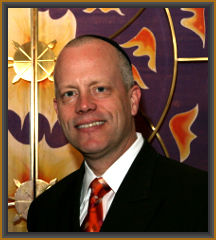
 |
June 21, 2024 - 15 Sivan 5784 Parasha Behalot’cha: Shining of Sacred Lights
I hope this correspondence finds you well and enjoying the balmy summer sunshine. Please join our Shabbat community this Saturday morning for in-person services at 10:00 am, which will be followed by a Kiddush luncheon. We are honored to welcome Rabbi David Korngold, who will lead our liturgy and participate in an “Ask-the-Rabbi” session after the luncheon. Please come, participate, and introduce yourself! In our English vernacular, the distinction between the terminology of Hannukiah and Menorah has often been confusing. This week’s Torah portion of Behalot’cha shares the details of the ritual dedication of the Menorah in the Holy Temple in Jerusalem. This function was exclusively performed by Aharon and his descendants and is revisited in modern times on the holiday of Hannukah, when we light the Hannukiah. Folks often confuse the wording of these two terms. Therefore, allow me to share a simple guide to help you remember the distinction between the Menorah and the Hannukiah! The candelabra that is referenced in this week’s reading is known as a Menorah and today is considered more of a symbolic object. It dates back to the time of the First Temple in Jerusalem and consists of seven branches of candle holders without a Shamash (helper candle). The Menorah is one of the oldest symbols in Judaism. The High Priests, known as the Kohanim, used to light the Menorah in the Temple every evening using pure olive oil. The Menorah is known worldwide as a symbol of the Jewish faith. In almost every synagogue around the world, there is a light placed above the ark, which holds the scrolls of the Torah. It is known as the Ner Tamid (the everlasting light). This light represents and reminds us of the Menorah from the original Temples. (When you are in Shul this Shabbat, check out the one above our ark.) Often, there are also Menorahs placed in synagogues as ornaments, as they are beautiful decorations and remind Jews of the Temples of the past. This Shabbat, we read of the commandments regarding the Menorah! The Hannukiah, on the other hand, is a type of candelabra, yet distinct with nine candle holders. Eight candles are in a line and the ninth candle is out of place, either at a different height or in a different position on the Hannukiah. They come in all shapes and sizes as long as there are eight candles at the same height and in line with each other with a ninth candle misaligned. Then, it is classified as a “Kosher” Hannukiah. The Hannukiah represents the miracle of the oil burning for eight days, instead of one, during the victory of the Maccabees. The Hannukiah is not part of the biblical Torah text. For both our Shabbat and Hannukah candle lightings, you likely recall that the blessing we recited is “L’Hadlik Ner Shel Shabbat” or “L’Hadlik Ner Shel Hannukah.” We thank God for giving us the opportunity to kindle the flames of the day. Interestingly, for the Mitzvah of the original Menorah, this week’s Torah portion uses the term יאירו, meaning to illuminate. I would like to think that the message of the historical distinction is that during the peaceful times of the Temple, when there was the affirmation of God’s presence in our proximity, and when there was tranquility in Israel, the illumination of the Menorah was a symbol of the greatest manifestation of spiritual enlightenment in the entire world. Everyone could feel Hashem’s presence, experience divine guidance, and revel in universal synchronicity with the clearly stated Torah values of kindness, morality, and lovingkindness. Today, when we kindle flames (either for Shabbat or for Hannukah), we are doing our small part to bring the world slowly back into the illumination of the presence of Hashem. Tonight, when you gather with loved ones to sanctify Shabbat by reciting the blessings over the candles, consider how your modest kindling is an act of repairing the world. Gathered together, the collective kindling of our candles may bring the world one step closer to illuminating the universe with Torah and Mitzvoth. That shining of sacred lights, my friends, is but one way the Jewish people will ultimately bring the world back to bathing in the full illumination of holiness, truth, and peace. This is also how the Jewish people continue to serve as a light unto the Nations. Shabbat Shalom Rabbi Eric L. Wasser, EdD, Hon DM.
|